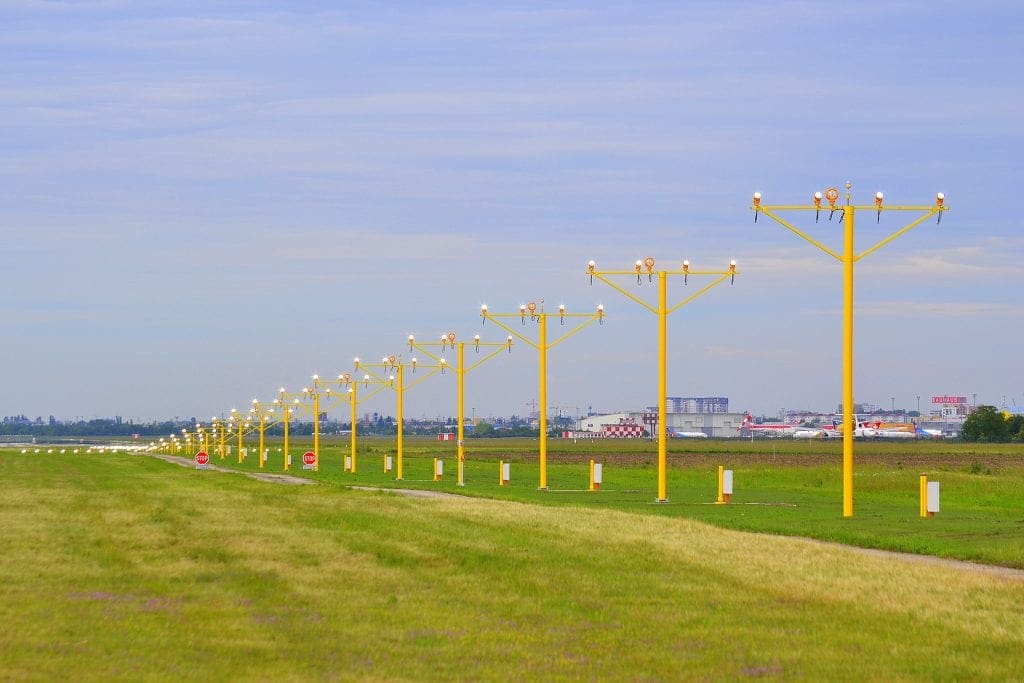In many safety-critical environments, such as airports and main roads, the term “frangible structure” is often used. Yet it remains unfamiliar to many outside of engineering and construction circles. Nevertheless, these structures play a vital role in ensuring safety, particularly in environments where the risk of collision is high.
What are frangible structures?
Frangible structures are designed to break, deform, or collapse upon impact, minimising the risk of injury or damage. Unlike traditional structures, built to withstand external forces, frangible structures are deliberately made to give way under specific conditions. This controlled failure mechanism reduces the potential for harm by absorbing the energy of an impact, rather than resisting it.
Common examples of frangible structures in safety-critical industries
Everyday examples of frangible structures include airport runway lights and roadside signs and poles. Airport runway lights, or approach lights, are mounted frangible poles that break away easily if struck by an aircraft. This reduces the likelihood of severe damage to the plane or injury to passengers. When urban planning, road signs and lampposts can be designed to be frangible. They will collapse upon impact with a vehicle, lessening the force of collision on passengers.

How do frangible structures work?
Frangible structures are typically made from materials that either fracture or deform under specific loads, for example fibreglass. The design involves careful calculation of the breaking point. It should ensure the structure remains intact under normal conditions but fails predictably under stress.
The key to effectiveness is in the material selection and design. Frangible airport runway lights are often mounted on lightweight masts with pre-weakened sections. This ensures the mast breaks away in a controlled manner when struck. This minimises the risk of debris, which could pose further hazards.
In roadside applications, frangible poles may be designed to shear off at the base upon impact. This will allow the pole to collapse forward and away from the vehicle, reducing the potential for a fatal crash.
The importance of frangible structures in safety-critical environments
The importance of frangible structures cannot be overstated, especially in environments where safety is so important. In aviation, for instance, the use of frangible structures on runways and taxiways is mandated by international standards. This includes the standards mandated by the ICAO and FAA. They’re in place to enhance the safety of both aircraft and passengers. Similarly, frangible structures help prevent fatal road accidents by absorbing and dissipating the energy of a crash, protecting vehicle occupants.

Essentially, frangible structures are a crucial element of passive safety systems. They do not prevent accidents, but they significantly reduce the severity of incidents when they occur. This makes them indispensable in the design and construction of infrastructure where safety is the highest priority.
Now and in the future
In environments where safety is a non-negotiable priority, frangible structures are silent protectors, designed to fail so we stay safe. Their importance in our lives, especially in high-risk areas, is a testament to forward-thinking engineering prioritising human safety above all.
Pollite is one of the largest manufacturers of fibreglass masts in Europe. We have an international presence that spans across Europe, Asia, USA, The Middle East, and Australasia. We boast over 50 years’ experience in the manufacture of fibreglass, and the design of frangible safety poles. Our product range includes approach masts, windsock masts, anemometer masts, frangible fencing and more. Every Pollite mast is designed and manufactured in our custom-built manufacturing facility, in the UK. Contact our team to discuss your frangible structure requirements.